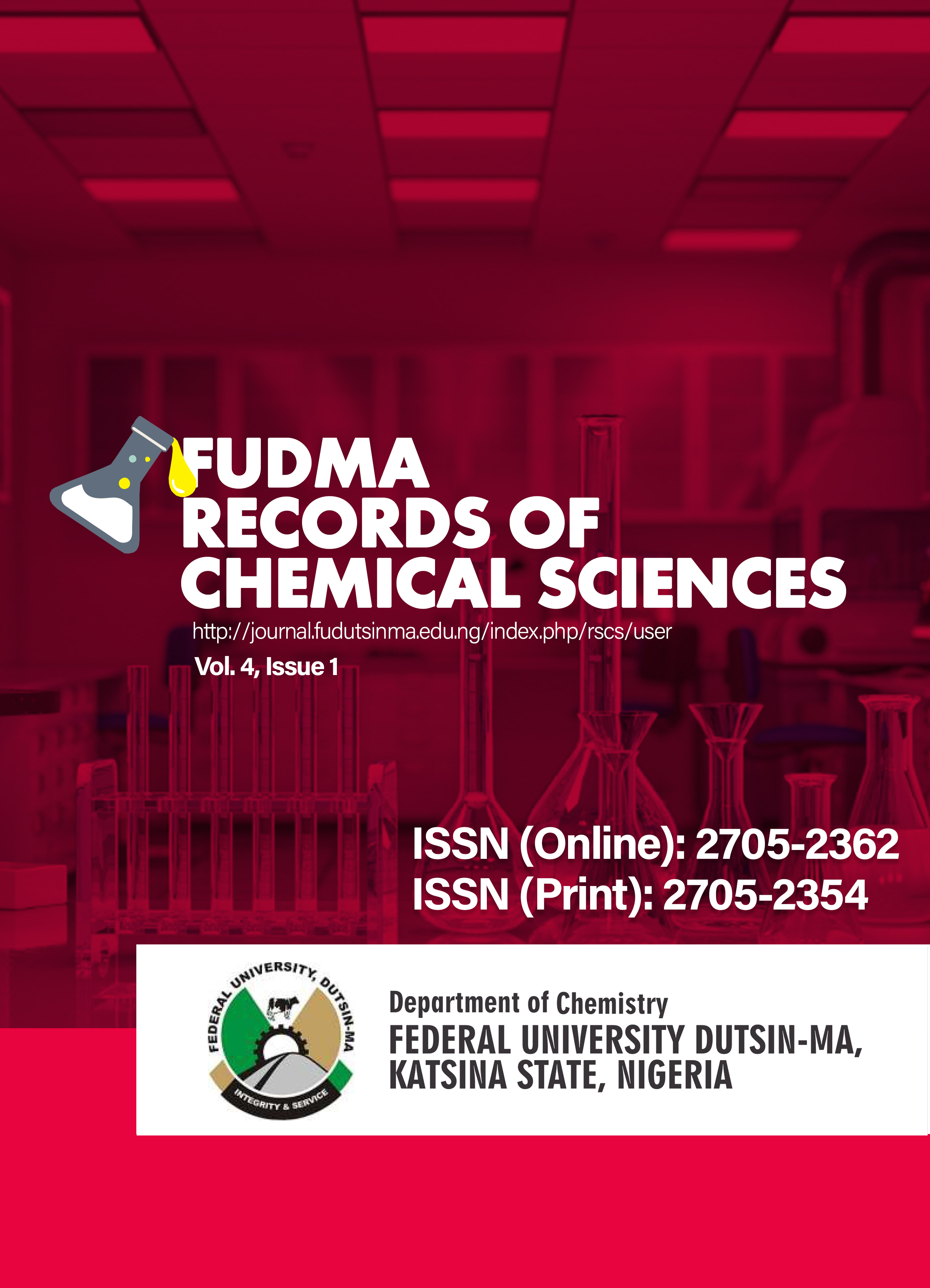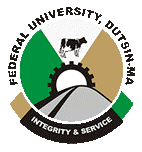Adsorption of Cadmium and Lead Ions on Activated Carbon prepared from Blended Bones of Cow and Goat
DOI:
https://doi.org/10.33003/frscs_2025_0401/10Keywords:
Adsorption , Bones , wastewater , Cadmium , Isotherms , low-costAbstract
The study aims to investigate the potential of activated carbon from blended bones of cow and goat for the removal
of lead and cadmium ions from wastewater. Bone samples of cow and goat were collected from Dustin-Ma old
market, Katsina State, and washed with deionized water to remove contaminants before drying in an oven at 110℃
for 24 h. The bones were mechanically ground into powder, carbonized in a muffle furnace at 700℃ for 3 hrs, and
sieved with a 300 µm sieve to obtain uniform particles. The carbon (50 g) was activated with concentrated
hydrochloric acid (10 ml) for 4 h and washed with deionized water to a neutral pH. The adsorbent was
characterized by Fourier-Transform Infrared Spectroscopy (FTIR), and Scanning Electron Microscope (SEM). The
adsorption study was performed using Box-Behnken Design (BBD) to optimize the variables affecting the removal
of metal and the response was determined using AAS. The adsorption isotherms were studied using the Langmuir
and Freundlich models. The FTIR showed adsorption peaks of aldehyde, amide, hydroxyl, and carboxylic
functional groups which aided the adsorption process. The activation of the bones impacted the surface
morphologies compared to the raw bones, revealing a large surface area favoring the adsorption of the metal ions in
the wastewater. The predicted maximum absorption for Cd2+ ion using an adsorbent dosage of 2.5 g, contact time
of 20 min, adsorbate concentration of 10 ppm, and agitation speed of 274.98 rpm was 99.38%, while the maximum
adsorption efficiency for Pb2+ ion using an adsorbent dosage of 2.5 g, contact time of 20 min, adsorbate
concentration of 13.43 ppm, and agitation speed of 270.59 rpm was 98.03%. The linearized equilibrium data and
the metal ions adsorption both obeyed the Langmuir and Freundlich models. R2 values of the Langmuir isotherm
were 0.9823 for Cd2+ and 0.9725 for Pb2+ whereas Freundlich isotherm has R2 values of 0.9772 for Cd2+ and 0.9881
for Pb2+, indicating homogenous distribution. Conclusively, a blend of chemically activated bones of cow and goat
bones can serve as an alternative low-cost adsorbent for the removal of cadmium and lead ions from wastewater.






